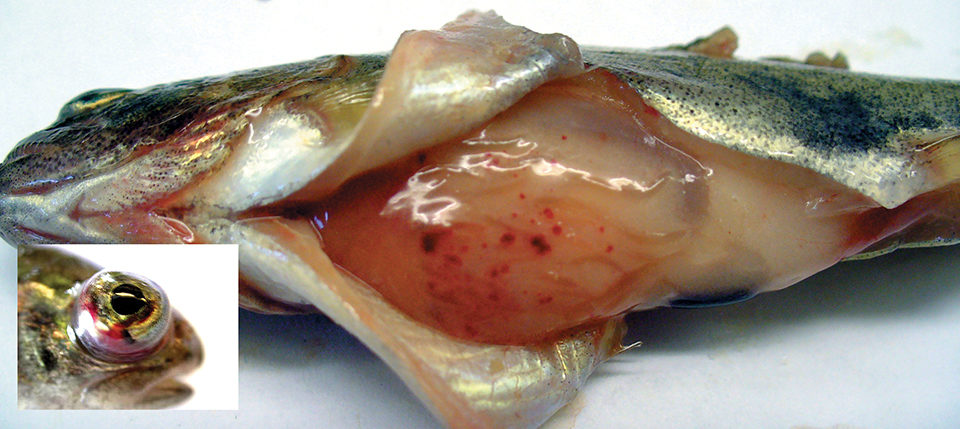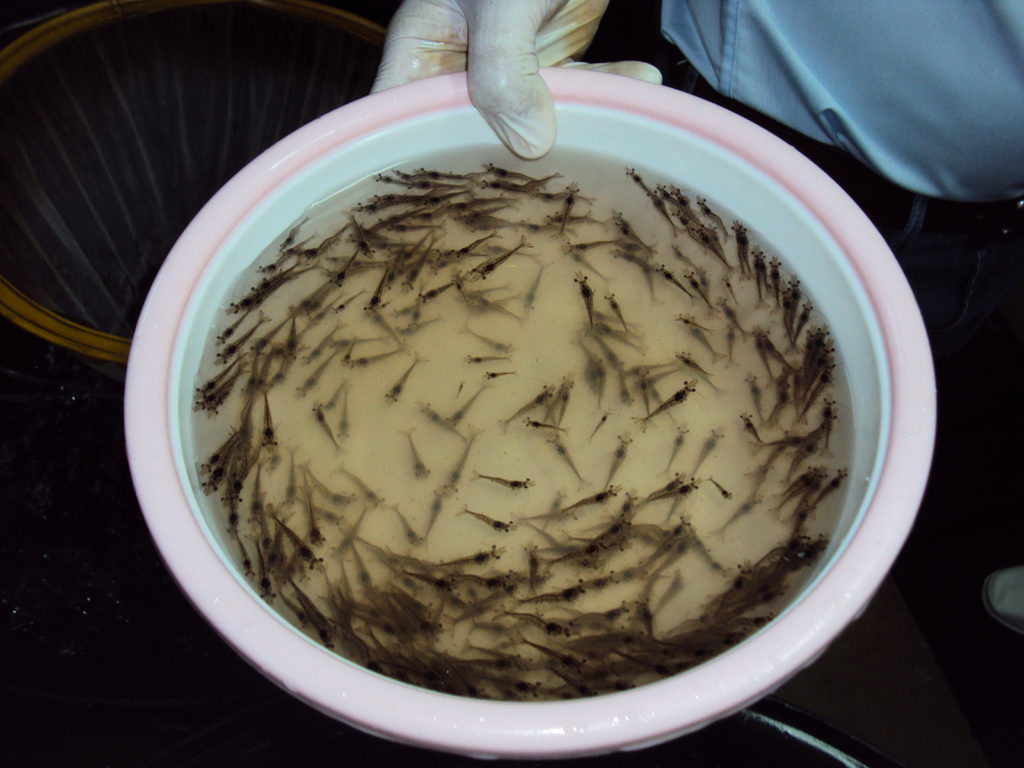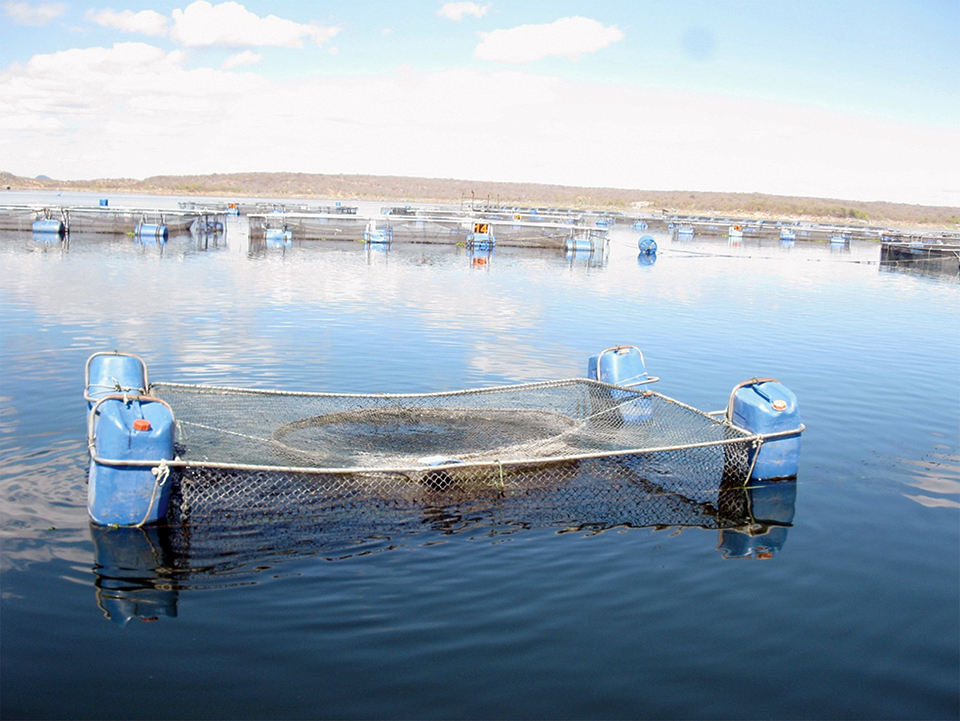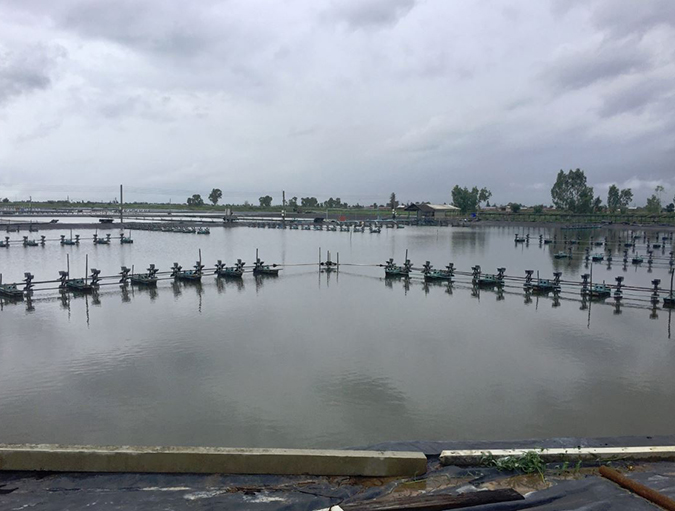Use is gaining as a supplement or replacement for antimicrobial compounds

There is growing understanding and awareness about the term probiotic, which is in everyday use, especially with yogurts, suggesting an image of a benefit to our health. The actual definition as given by the United Nations Food and Agricultural Organization (FAO) states that a probiotic is a live microorganism, which is applied orally, i.e. in food, and has some tangible (health) benefit for the host. For terrestrial animals (including humans), probiotics are almost exclusively lactic acid-producing bacteria, which have been traditionally grouped as Lactobacillus, the organisms involved in the production of yogurts.
The mode of action is usually thought to involve competitive exclusion, which means that the organism colonizes the digestive tract and outcompetes the potential disease-causing organisms by the production of antibiotics or other inhibitory compounds or by occupying the niches that disease-causing organisms would otherwise need to colonize while initiating infection.
Use in aquaculture
The use of probiotics in aquaculture is a comparatively new development in disease control. Yet their use is steadily gaining momentum, supplementing or, as in Ecuador, replacing the use of antimicrobial compounds.
Unlike their terrestrial counterparts, a very wide range of organisms have been considered for use with aquatic animals, including bacteriophages, microalgae (Tetraselmis suecica), yeasts (Debaryomyces, Phaffia and Saccharomyces), Gram-positive bacteria (Bacillus, Carnobacterium, Enterococcus, Lactobacillus, Lactococcus, Micrococcus, Streptococcus and Weissella) and Gram-negative bacteria (Aeromonas, Alteromonas, Photorhodobacterium, Pseudomonas and Vibrio), with widespread success reported in finfish and shellfish culture.
However, one concern is that some of the probiotics are from bacterial groups such as Aeromonas and Pseudomonas, which are generally associated with disease. There is also the worry that virulence genes could be acquired by a process known as horizontal gene transfer. It is comforting to realize that there is no evidence that this has ever occurred in practice.
Overall, the introduction of probiotics to aquaculture can be considered a valuable addition to the range of disease control strategies. Evidence points to the success of probiotic treatments in a wide range of species from finfish to invertebrates over a diverse area from Chile and Ecuador to China and India.
Effectiveness
Some specialist companies are now producing probiotics especially for the aquaculture industry. There is accumulating evidence that probiotics are effective at inhibiting a wide range of fish pathogens, including bacteria and parasites (Table 1).
Brunt, Effects of probiotics, Table 1
| Probiotic | Host Species | Host Effect |
|---|---|---|
| Aeromonas hydrophila, Vibrio fluvialis, Carnobacterium sp., Micrococcus luteus | Rainbow trout ( Oncorhynchus mykiss) | Control of furunculosis |
| Aeromonas media, strain A199 | Oysters ( Crassostrea gigas) | Reduced mortality when challenge with Vibrio tubiashii |
| Bacillus S11 | Black tiger prawns ( Penaeus monodon, PL-10) | Higher postlarvae survival when challenged with Vibrio harveyi |
| Carnobacterium divergens | Atlantic cod fry ( Gadus morhua) | Reduced mortality when challenged with Vibrio anguillarum |
| Carnobacterium sp. | Atlantic salmon ( Salmo salar L.) | Reduced disease caused by A. salmonicida, V. ordalii and Y. ruckeri |
| Enterococcus faecium SF68 | Eels ( Anguilla anguilla) | Reduced edwardsiellosis effects |
| Lactobacillus sp., Carnobacterium sp. | Turbot larvae ( Scophthalmus maximus) | Reduced mortality when challenged with Vibrio sp. |
| Pseudomonas fluorescens | Rainbow trout | Reduced mortality when challenged with Vibrio anguillarum |
| Vibrio, strain E | Turbot | Improved survival and growth after challenge with Vibrio splendidus |
| Vibrio alginolyticus | Atlantic salmon | Reduced disease effects caused by Aeromonas salmonicida, Vibrio anguillarum, Vibrio ordalii |
Indeed, one probiotic from the authors’ laboratory has led to excellent protection of rainbow trout to infections caused by Aeromonas salmonicida, Lactococcus garvieae, Streptococcus iniae, Vibrio anguillarum/V. ordalii and Yersinia ruckeri – the causal agents of furunculosis, lactococcosis, streptococcosis, vibriosis and enteric redmouth, respectively.
Of note, there was evidence that the probiotic protected fish when vaccines failed. When administered to rainbow trout with an average weight of 12 grams for 14 days in feed dosed at 200 million cells per gram of feed, mortalities were reduced below 16 percent following experimental challenge when 80 percent to 100 percent of the untreated controls died.
Referring back to the official FAO definition of a probiotic, it should be pointed out that probiotic use in aquaculture has been tweaked such that the waterborne route is sometimes used. Is this still a probiotic, or should it be considered a water treatment? Also, the accepted norm for a probiotic is that it is administered as a live preparation, but who checks viability? Indeed, there is a growing body of evidence that some probiotics work as effectively as inactivated material.
Typical use
A typical regime for the application of probiotics involves feeding with doses equivalent to 10 million to 100 million bacterial cells/g of feed for one to two weeks. Accumulating evidence points to a reduction in non-specific disease signs such as fin and tail rot, and protection against specific bacterial diseases including furunculosis and vibriosis.
There do not appear to be any advantages to feeding probiotics over prolonged periods. From the early work, it appeared that probiotics were effective only against single diseases, but recent evidence points to “herd” immunity. There is also evidence of immune memory with fish that received probiotic treatment being protected for many months after administration of the organism. A common added benefit is a marked stimulation in appetite, which can last a lot longer than the actual feeding period with the probiotic.
Quick protection
How do probiotics actually work? Undoubtedly, there is a role for competitive exclusion, although the authors’ studies have demonstrated stimulation of the innate immune response in every case investigated over the last 12 years. This includes a heightened ability of the so-called macrophages to scavenge for foreign pathogen cells in the animal. The result is that fish become protected very quickly, usually within two weeks. This is usually much faster than with conventional fish vaccines.
Other possible modes of action include nutritional, by which enzymes produced by the live bacteria alter components in the diet. Perhaps bacterial components, such as vitamins, could also benefit the health of the aquatic animals.
A logical question follows – what is the legal status of probiotics? Are they feed additives or some form of veterinary medicine? Certainly, there has been legal discussion over the precise nature of probiotics. The authors’ view is that they comprise heterologous oral vaccines.
Perspectives
There is accumulating evidence that probiotics do work in aquaculture, with widespread use reported in South America and Asia. In Ecuador, an added benefit has been a reduced need for antibiotics. However, it remains to be seen whether the use of probiotics will increase elsewhere in other markets, such as North America and Europe.
There are certainly market opportunities. For the future, consideration could be given to using probiotics in combination with other immunostimulants, vaccines, prebiotics or as a mix containing several probiotic cultures.
(Editor’s Note: This article was originally published in the September/October 2009 print edition of the Global Aquaculture Advocate.)
Now that you've reached the end of the article ...
… please consider supporting GSA’s mission to advance responsible seafood practices through education, advocacy and third-party assurances. The Advocate aims to document the evolution of responsible seafood practices and share the expansive knowledge of our vast network of contributors.
By becoming a Global Seafood Alliance member, you’re ensuring that all of the pre-competitive work we do through member benefits, resources and events can continue. Individual membership costs just $50 a year.
Not a GSA member? Join us.
Authors
-
Jason Brunt, Ph.D.
Institute of Food Research
Norwich Research Park
Colney, Norwich NR4 7UA
United Kingdom[107,117,46,99,97,46,99,114,115,98,98,64,116,110,117,114,98,46,110,111,115,97,106]
-
Brian Austin, D.Sc.
Institute of Aquaculture
University of Stirling
Stirling, Scotland, U.K.
Tagged With
Related Posts

Health & Welfare
Assessment of supplemental Bacillus probiotics in whiteleg shrimp juveniles
Results of a feeding study supplementing probiotics in the diet showed that when the Bacillus species were complemented in an appropriate concentration into feeds, the growth and feed efficiency of whiteleg shrimp could be improved.

Health & Welfare
Bacillus probiotics benefit tilapia rearing under challenging conditions in Brazil
A recent study that evaluated the benefits of using probiotics with a balanced mixture of Bacillus bacteria strains to inhibit pathogenic bacteria in tilapia.

Health & Welfare
A holistic management approach to EMS
Early Mortality Syndrome has devastated farmed shrimp in Asia and Latin America. With better understanding of the pathogen and the development and improvement of novel strategies, shrimp farmers are now able to better manage the disease.

Health & Welfare
Aquamimicry: A revolutionary concept for shrimp farming
Aquamimicry simulates natural, estuarine production conditions by creating zooplankton blooms as supplemental nutrition to the cultured shrimp, and beneficial bacteria to maintain water quality. Better-quality shrimp can be produced at lower cost and in a more sustainable manner.


